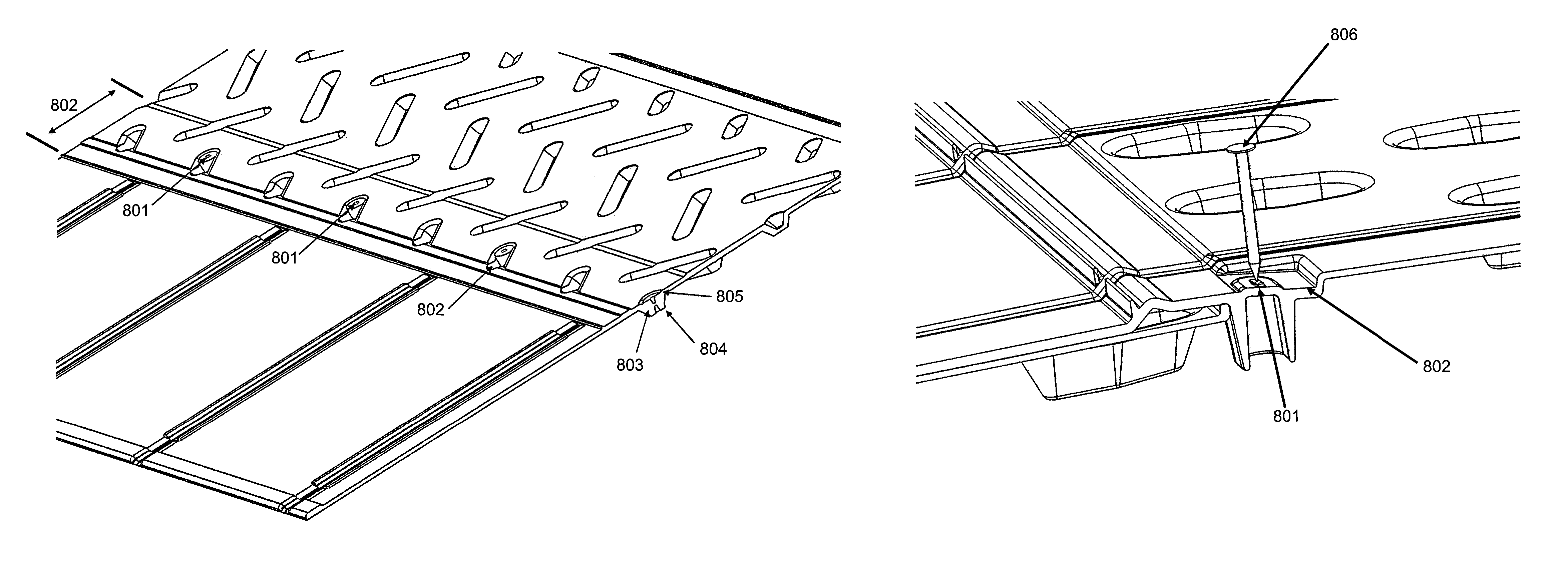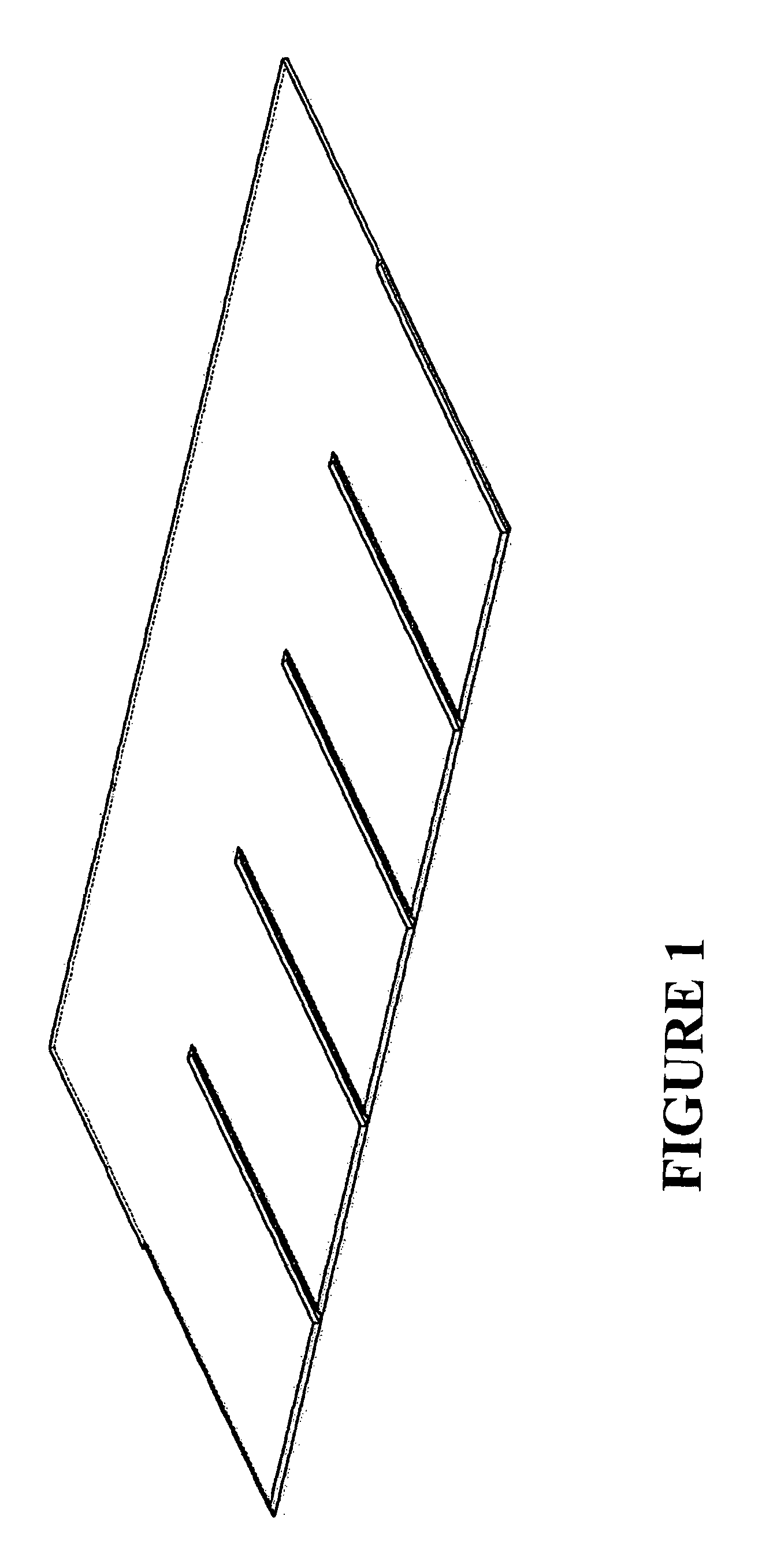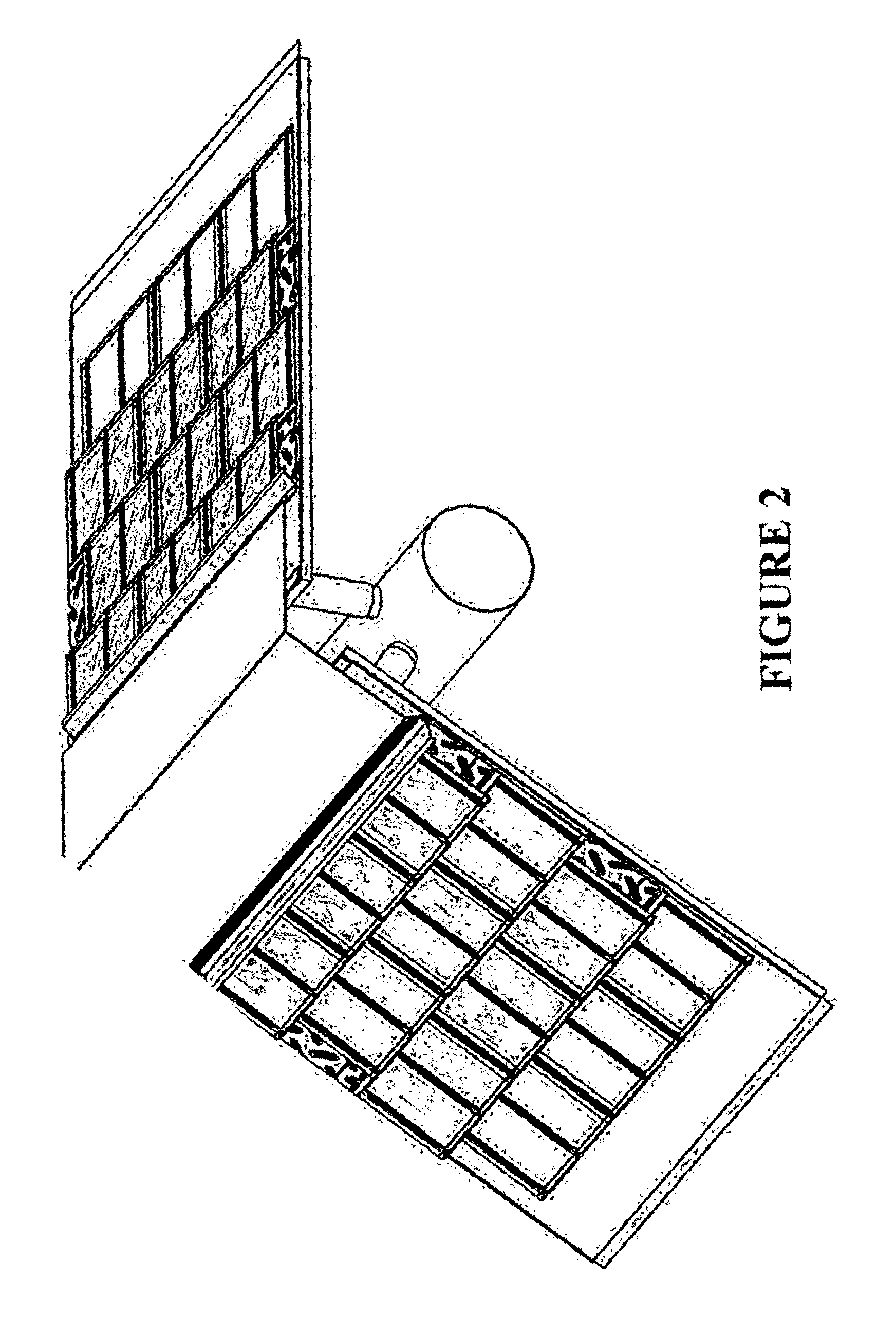Roofing, cladding or siding product, its manufacture and its use as part of a solar energy recovery system
a technology for solar energy recovery and roofing, applied in the direction of roof covering ventilation, photovoltaics, solar heat collectors for particular environments, etc., can solve the problems of difficult mass production, poor durability and environmental resistance, and difficult installation, so as to reduce the cost of mass production, the effect of easy installation
- Summary
- Abstract
- Description
- Claims
- Application Information
AI Technical Summary
Benefits of technology
Problems solved by technology
Method used
Image
Examples
Embodiment Construction
[0099]It is to be appreciated that certain aspects, modes, embodiments, variations and features of the invention are described below in various levels of detail in order to provide a substantial understanding of the present technology.
[0100]The present technology is described herein using several definitions, as set forth throughout the specification. Unless otherwise stated, the singular forms “a,”“an,” and “the” include the plural reference. For example, a reference to “a device” includes a plurality of devices.
[0101]As used herein the term “and / or” means “and” or “or”, or both.
[0102]As used herein “(s)” following a noun means the plural and / or singular forms of the noun.
[0103]Relative terms, such as “lower” or “bottom”, “upper” or “top,” and “front” or “back” may be used herein to describe one element's relationship to another element as illustrated in the Figures. It will be understood that relative terms are intended to encompass different orientations of the device in addition...
PUM
| Property | Measurement | Unit |
|---|---|---|
| length | aaaaa | aaaaa |
| length | aaaaa | aaaaa |
| thickness | aaaaa | aaaaa |
Abstract
Description
Claims
Application Information
 Login to View More
Login to View More - R&D
- Intellectual Property
- Life Sciences
- Materials
- Tech Scout
- Unparalleled Data Quality
- Higher Quality Content
- 60% Fewer Hallucinations
Browse by: Latest US Patents, China's latest patents, Technical Efficacy Thesaurus, Application Domain, Technology Topic, Popular Technical Reports.
© 2025 PatSnap. All rights reserved.Legal|Privacy policy|Modern Slavery Act Transparency Statement|Sitemap|About US| Contact US: help@patsnap.com



